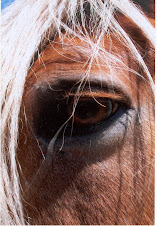Wednesday, August 31, 2011
Art lessons from a four-year-old
My four-year-old granddaughter Wren is not only an amateur entomologist, she’s also an artist. She was doing a painting of an ocean a few weeks ago with acrylic paints. She mixed peachy pink and lavender and exclaimed, “This is the perfect color for the ocean.”
My sister, also an artist, looked at Wren’s concoction and agreed. It was the perfect ocean color.
How a four-year-old could not only know the color of the ocean, but mix that color from two different colors, is amazing to me.
This past weekend, my sister and I went to Grand Marais, Minn. on a camping trip. My sister was taking a pottery class at the Grand Marais Art Colony, and I was taking a three-day class in pastel painting.
It seemed the water theme followed us.
Grand Marais is along Lake Superior, where stunning water meets black rock and green landscapes. We parked our camper in the municipal campground. Getting into town from the campground was a few blocks walk along the lakeshore, then two blocks up the hill to the Art Colony. The walk was beautiful, whether it was in the fog of early morning, the bright sun of afternoon or the calm at dusk.
I had brought along several photographs to work from in my pastel class and chose a picture of five women sitting on Bay View Beach in Washburn. I wanted to explore painting people and the instructor was a former figure and portrait artist.
We began our paintings and my sky turned out quite nice. Next came the deep section of Lake Superior, again not too hard. The middle section was the shallows, with small waves not quite breaking over the sand bottom, which was visible through the water. Getting just the right color for this section proved to be difficult.
In class the next morning, my instructor informed us we were going to learn how to make our own pastel sticks. Pastel sticks are made of pure pigment with a binder. Our task was to crush parts of our pastel sticks, mix with water, then add either white or black pigment with the binder to create new colors. The new pastel was rolled into neat sticks and set in the sun to dry.
When taking a class at the Art Colony, you have access to the studio 24 hours a day. After class was over that afternoon, my sister and I went back to the camper for supper. When I told her about my experience with mixing pastels, she reminded me of Wren’s recipe for the ocean, peachy pink and lavender.
We walked back to the Art Colony, and while my sister threw pots in the clay studio, I went upstairs to work on a new pastel color for my painting. I found a stick of peachy pink and a stick of lavender then wondered what proportions Wren had used in her mixing.
When exercising my adult brain proved unhelpful, I decided to think like a four-year-old. I split each stick in random halves, crushed them, added water and stirred. Comparing the resulting color to the photograph of Lake Superior, I was surprised to find it was the exact color I needed.
I left the stick to dry over night.
Our morning was spent with a plein aire demonstration by the instructor on Artist’s Point. The instructor perched her easel on the rocky shoreline and painted a multi-layered rendition of the outcropping rocks and lake while we sat in the sun watching the changing colors and listening to the tourists watching us.
After lunch, we again gathered in the studio and I was able to try out my new, ocean colored pastel stick on my painting. When I was finished, the instructor said, “I wasn’t sure how you were going to do on that water section, but it looks very good.”
Thank you, Wren, for saving my painting.
Subscribe to:
Post Comments (Atom)





Love this!
ReplyDelete